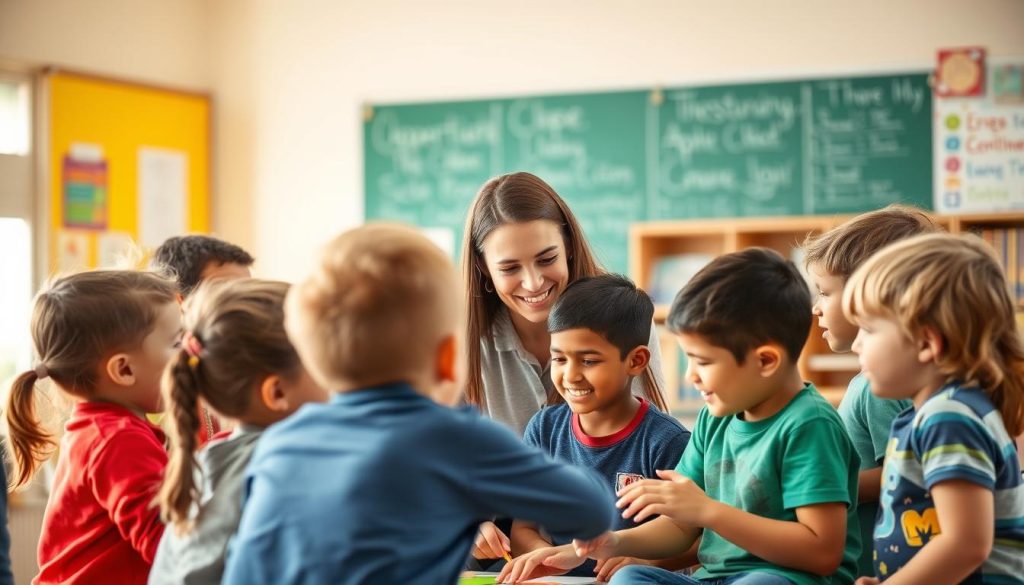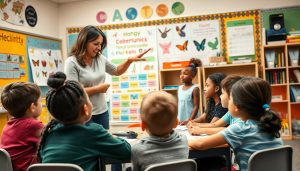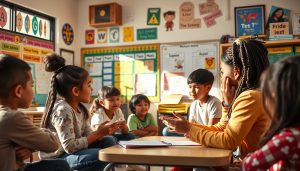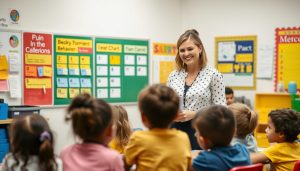The Importance of Building Relationships in the Classroom
Research consistently shows that positive teacher-student relationships are linked to better academic outcomes. According to a study from Edutopia, students who feel connected to their teachers are more likely to attend school regularly, participate actively in class, and achieve higher grades. These benefits extend beyond academics—students with strong teacher relationships also demonstrate better social skills, emotional regulation, and resilience in the face of challenges.
Developing teacher skills in relationship-building is particularly crucial in today’s diverse classrooms. Each student brings unique experiences, cultural backgrounds, and learning needs that require personalized approaches. When teachers invest time in understanding their students as individuals, they can create more inclusive and effective learning environments that address the whole child.
Building relationships also serves as a preventative measure for classroom management issues. Students who feel respected and valued by their teachers are less likely to engage in disruptive behaviors. This creates a positive cycle: better relationships lead to fewer behavioral challenges, which in turn allows for more meaningful instructional time and deeper learning experiences.
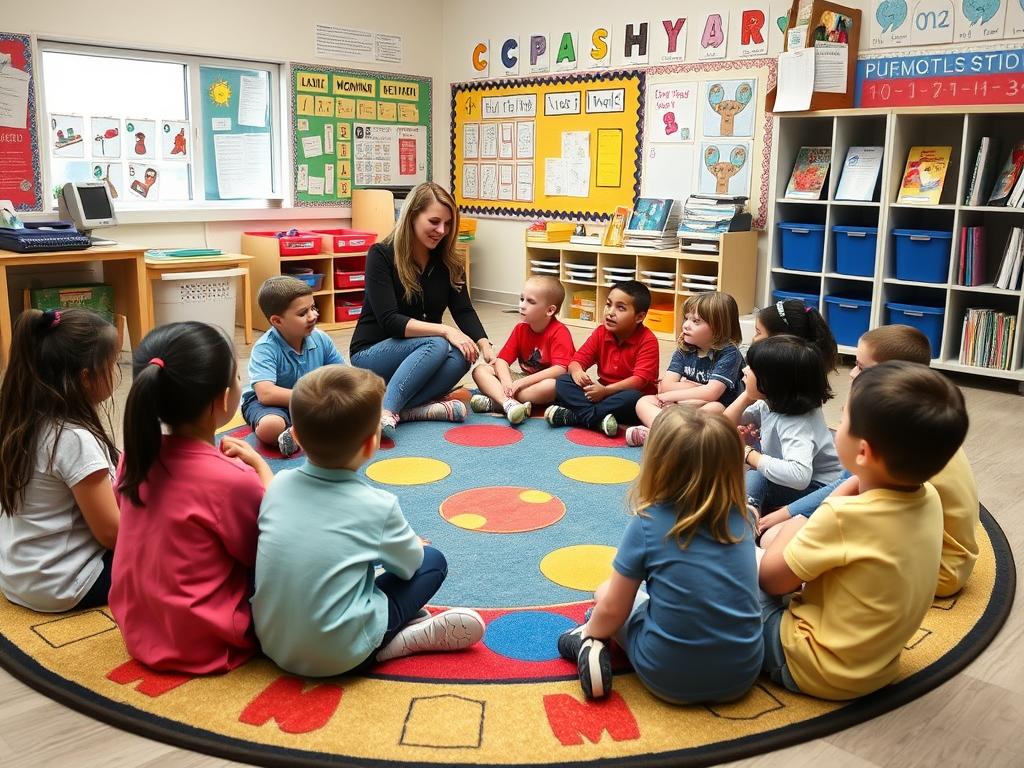
As one teacher reflected, “The time I invest in building relationships at the beginning of the year pays dividends throughout the entire school year. When students know I genuinely care about them, they’re willing to work harder, take risks, and persevere through challenges.” This sentiment echoes what educational research has long confirmed: the quality of teacher-student relationships significantly impacts both academic and social-emotional outcomes.
Building Relationships Starts with Teacher Self-Awareness
Before you can effectively connect with students, it’s important to understand your own communication style, biases, and emotional triggers. Self-aware teachers recognize how their words, actions, and non-verbal cues impact student perceptions and classroom dynamics. Developing this aspect of teacher skills requires honest reflection and a willingness to grow professionally.
Start by examining your own educational experiences. How did your favorite teachers make you feel valued and understood? What teacher behaviors created distance or disconnection? These reflections can provide valuable insights into effective relationship-building strategies that you might incorporate into your own practice.
“The most effective teachers are those who can step outside themselves and see the classroom through their students’ eyes. This perspective-taking is fundamental to building authentic relationships.”
Consider keeping a teaching journal to track your interactions with students, noting patterns in your responses to different behaviors or situations. Are there certain students you connect with more easily than others? Do you find yourself having more positive interactions with some students while others receive more corrections? These patterns can reveal unconscious biases that may be affecting your relationship-building efforts.
Developing teacher skills in emotional regulation is also crucial for building positive relationships. When you can manage your own emotions effectively, you’re better equipped to respond rather than react to challenging classroom situations. This emotional steadiness creates a sense of safety for students and models healthy relationship skills.
Enhance Your Relationship-Building Skills
Discover research-based strategies for connecting with even your most challenging students. Our comprehensive course provides practical tools you can implement immediately.
Building Relationships in the First Days of School
The beginning of the school year presents a critical window for establishing positive teacher-student relationships. During these first interactions, students are forming impressions about whether they belong in your classroom, if you’re trustworthy, and how much you value them as individuals. Intentional relationship-building during this period sets the tone for the entire year.
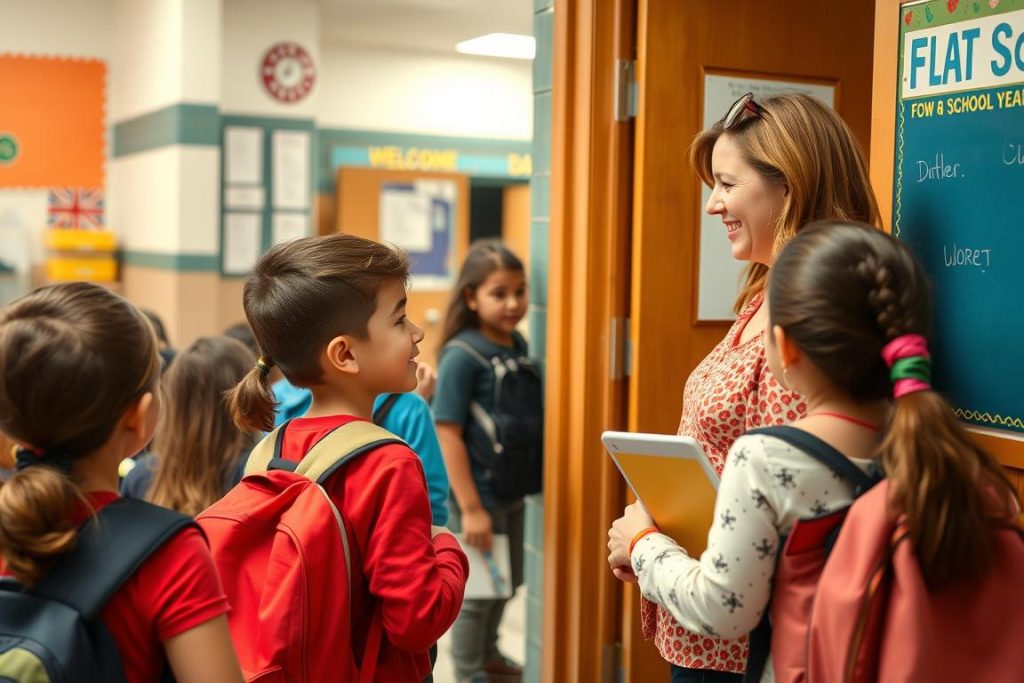
One effective strategy is to greet each student by name at the door every day. This simple practice demonstrates that you see and value each individual. Research shows that personalized greetings can increase student engagement by up to 20% and reduce disruptive behavior. As you develop this teacher skill, try to notice something specific about each student—their new haircut, the book they’re carrying, or their sports jersey—and incorporate that observation into your greeting.
Getting-to-know-you activities should go beyond surface-level information. While favorite colors and foods are fine starting points, deeper connections form when you learn about students’ hopes, challenges, and interests. Consider using activities that reveal students’ learning preferences, personal strengths, and areas where they might need support.
Here are some effective relationship-building activities for the first week:
- Student interest surveys that include questions about learning preferences, challenges, and goals
- Two truths and a lie—with teacher participation to model vulnerability
- Class agreements created collaboratively rather than teacher-imposed rules
- Identity maps where students share important aspects of who they are
- Hopes and dreams activities that connect personal goals to classroom learning
Remember that building relationships requires authenticity. Students quickly detect insincerity, so your efforts must come from a genuine desire to know and support them. As you develop these teacher skills, focus on creating a classroom environment where students feel safe sharing their thoughts, asking questions, and taking academic risks.
Communication Strategies for Building Relationships with Students
Effective communication forms the cornerstone of strong teacher-student relationships. How you speak to students, listen to their concerns, and respond to their needs directly impacts their sense of belonging and academic engagement. Developing teacher skills in communication requires both intentional practice and genuine care.
Active listening is perhaps the most powerful communication tool for building relationships. When students share their thoughts or concerns, give them your full attention—put down your phone, turn away from your computer, and make eye contact. Reflect back what you hear to confirm understanding: “It sounds like you’re feeling frustrated because the group project isn’t going as planned. Is that right?” This validation shows students that their perspectives matter.
Verbal Communication Tips
- Use students’ names frequently and pronounce them correctly
- Phrase directions positively rather than focusing on what not to do
- Ask open-ended questions that invite thoughtful responses
- Share appropriate personal stories that connect to learning
- Use humor thoughtfully to create a positive atmosphere
Non-Verbal Communication Tips
- Position yourself at students’ eye level when speaking one-on-one
- Use warm facial expressions and an approachable posture
- Move throughout the classroom to connect with all students
- Notice and respond to students’ emotional cues
- Create physical spaces that facilitate connection
Cultural responsiveness in communication is essential for building relationships with diverse student populations. Recognize that communication norms vary across cultures—direct eye contact, physical proximity, and comfort with self-advocacy can differ significantly. Developing teacher skills in cultural competence allows you to adapt your communication approach to meet individual student needs.
Digital communication also plays an increasingly important role in building relationships with today’s students. Whether through classroom management apps, email, or learning management systems, your online interactions should reflect the same respect and care as your in-person communication. Consider creating short video messages for students or families to add a personal touch to digital interactions.
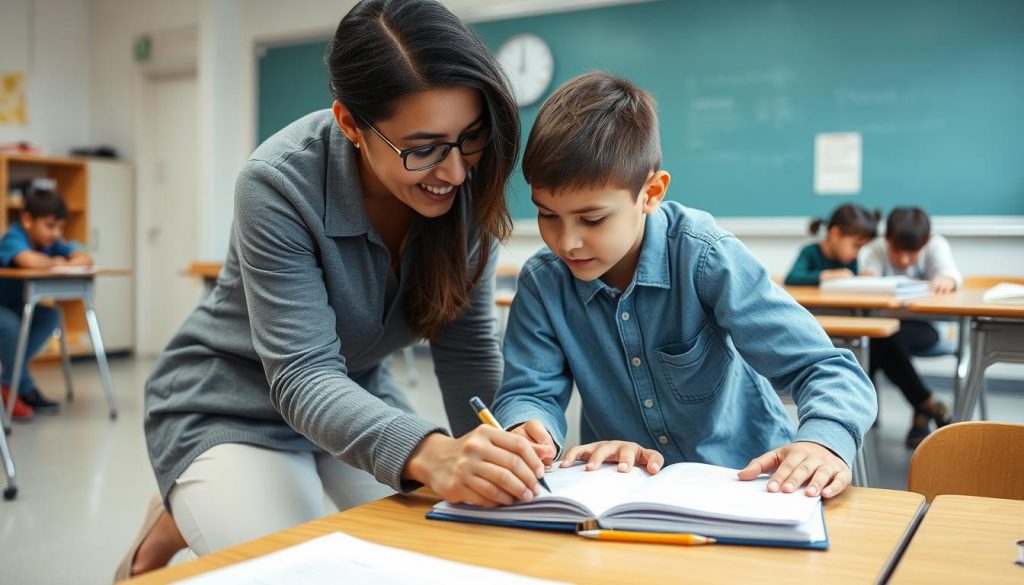
Trust: The Foundation of Building Relationships
Trust forms the bedrock of effective teacher-student relationships. When students trust their teachers, they’re more willing to take academic risks, share their challenges, and engage deeply with learning. Building trust requires consistency, fairness, and emotional safety—all essential teacher skills that develop over time through intentional practice.
Consistency in your words and actions demonstrates reliability. When you follow through on promises—whether it’s returning graded work when promised or remembering a student’s upcoming basketball game you said you’d ask about—you show students they can count on you. This reliability extends to classroom management as well; students feel secure when expectations are clear and consequences are applied fairly.
“Trust is built in small moments of connection, consistency, and care. It’s not about grand gestures, but rather the accumulated impact of daily interactions that show students they matter.”
Emotional safety is equally crucial for trust-building. Students need to know that their classroom is a place where they can express ideas, make mistakes, and be themselves without fear of ridicule or harsh judgment. Creating this environment requires developing teacher skills in establishing and maintaining respectful classroom norms.
Consider these trust-building practices:
- Admit when you make mistakes and model how to make amends
- Maintain confidentiality when students share personal information (unless safety concerns require reporting)
- Apply consequences privately and respectfully
- Show up for important student events when possible
- Respond to student needs promptly and compassionately
- Demonstrate fairness in how you distribute attention and opportunities
Building relationships through trust also means recognizing that some students may have had negative experiences with authority figures or educational institutions in the past. These students may need more time and consistent positive interactions before they fully trust you. Patience and persistence are key teacher skills when working with students who have experienced relational trauma or educational disappointment.
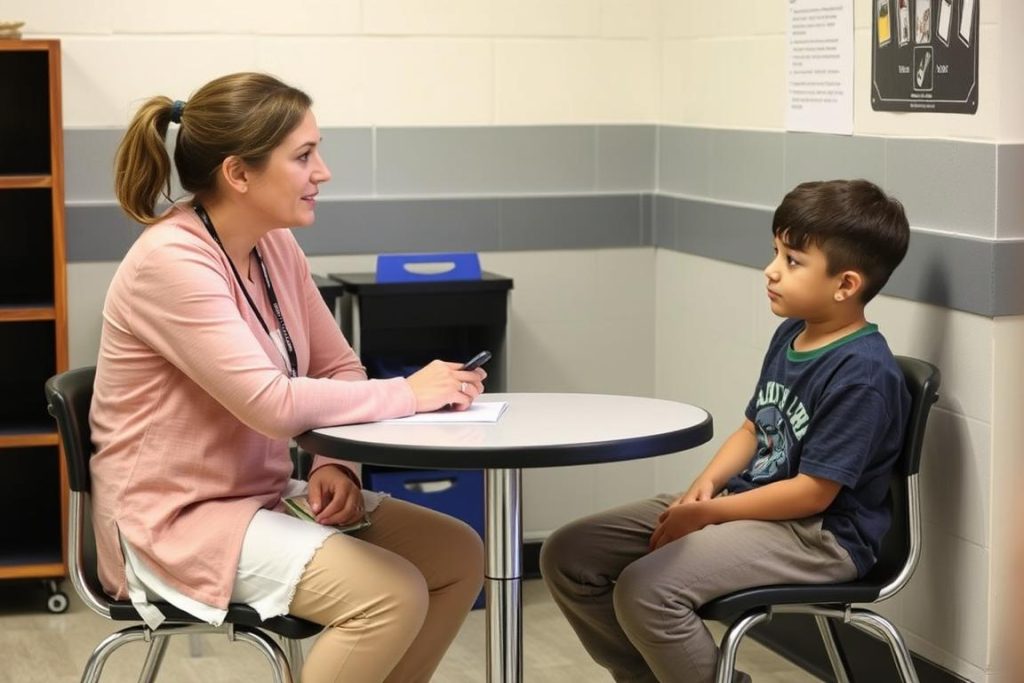
Deepen Your Understanding of Relationship-Building
Access research-based strategies and practical tools for creating trust with your most challenging students.
Cultural Responsiveness in Building Relationships
Effective relationship-building in today’s diverse classrooms requires cultural responsiveness—the ability to recognize, respect, and respond to students’ cultural backgrounds, experiences, and perspectives. Developing teacher skills in cultural competence enables you to connect authentically with students from all backgrounds and create truly inclusive learning environments.
Start by examining your own cultural lens and how it shapes your expectations and interactions. We all have cultural biases that influence our perceptions of “appropriate” behavior, communication styles, and learning approaches. Recognizing these biases is the first step toward more equitable relationship-building practices.
Learning about students’ cultural backgrounds provides valuable context for building meaningful connections. This doesn’t mean making assumptions based on a student’s perceived identity, but rather creating opportunities for students to share their cultural knowledge, traditions, and experiences if they choose to do so. Family interviews, cultural celebration days, and identity-affirming projects can all facilitate this cultural exchange.
Language awareness is another important aspect of culturally responsive relationship-building. For English language learners, your efforts to learn a few words in their home language, properly pronounce their names, and provide appropriate language supports demonstrate respect and care. These teacher skills create bridges across linguistic differences and foster a sense of belonging.
Consider these strategies for culturally responsive relationship-building:
- Incorporate diverse perspectives, authors, and examples in your curriculum
- Learn about communication norms across cultures (e.g., eye contact, personal space)
- Create classroom displays that reflect students’ cultural backgrounds
- Invite family and community members to share cultural knowledge
- Acknowledge and discuss cultural events and holidays
- Examine classroom policies for potential cultural bias
Remember that cultural responsiveness is an ongoing journey, not a destination. Even experienced teachers continue developing these skills throughout their careers. The willingness to learn, adapt, and sometimes make mistakes is part of authentic relationship-building across cultural differences.
As educational researcher Zaretta Hammond notes, “Culturally responsive teaching isn’t a set of strategies or activities. It’s a mindset that extends into every interaction with students and families.” This mindset forms the foundation for building relationships that honor students’ full identities and cultural wealth.
Overcoming Challenges in Building Relationships
Even the most skilled educators encounter obstacles when building relationships with students. Time constraints, large class sizes, and students with challenging behaviors can all make connection difficult. Developing teacher skills in navigating these challenges is essential for creating a classroom where all students feel valued and understood.
Time limitations present perhaps the most common barrier to relationship-building. With curricular demands, standardized testing, and administrative responsibilities, finding moments for meaningful connection can seem impossible. However, effective teachers integrate relationship-building into existing routines rather than treating it as a separate task.
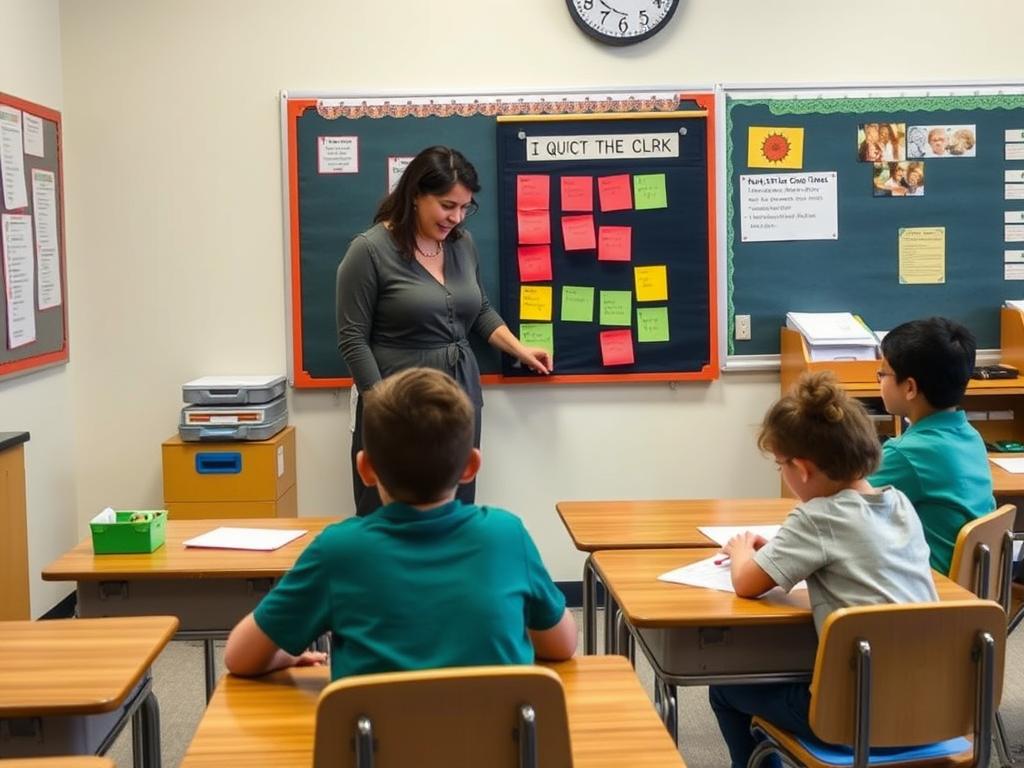
Consider these time-efficient relationship-building strategies:
- Use entrance and exit tickets that include personal check-in questions
- Implement a quick morning meeting routine (even 5-10 minutes makes a difference)
- Rotate through student conferences during independent work time
- Create systems for regular written exchanges (journals, notes, digital messages)
- Use transition times for brief personal connections
Building relationships with students who exhibit challenging behaviors requires patience, consistency, and strategic teacher skills. These students often have the greatest need for positive relationships but may push away connection through their actions. Remember that challenging behavior is often a form of communication—students may be expressing unmet needs, past relational trauma, or a lack of appropriate social skills.
The 2:1 strategy can be particularly effective with these students: aim for at least two positive interactions for every correction or redirection. These positive moments might be as simple as a specific compliment, a check-in about their interests, or a moment of connection about something they did well. Over time, this positive ratio helps rebuild trust and create a foundation for behavioral improvement.
“The students who challenge us the most are often those who need positive relationships the most desperately. Their behavior may push us away, but our persistence in connecting can be transformative.”
Large class sizes can make individual connection seem daunting. Developing teacher skills in efficient relationship-building systems helps ensure that all students receive attention. Consider implementing structured opportunities for connection such as student spotlight moments, small group lunches with the teacher on a rotating basis, or partnership activities that allow you to circulate and connect with multiple students in a single session.
Remember that relationship-building is not a one-size-fits-all process. Some students will respond to humor, others to shared interests, and still others to academic support. The flexibility to adapt your approach based on individual student needs is a crucial teacher skill that develops with experience and intentional practice.
Maintaining and Repairing Relationships Throughout the Year
Building relationships isn’t a one-time event but an ongoing process that requires maintenance, occasional repair, and continuous growth. As the school year progresses, the initial excitement fades, academic pressures increase, and both teachers and students may experience stress that challenges their connections. Developing teacher skills in relationship maintenance ensures that your classroom community remains strong throughout the year.
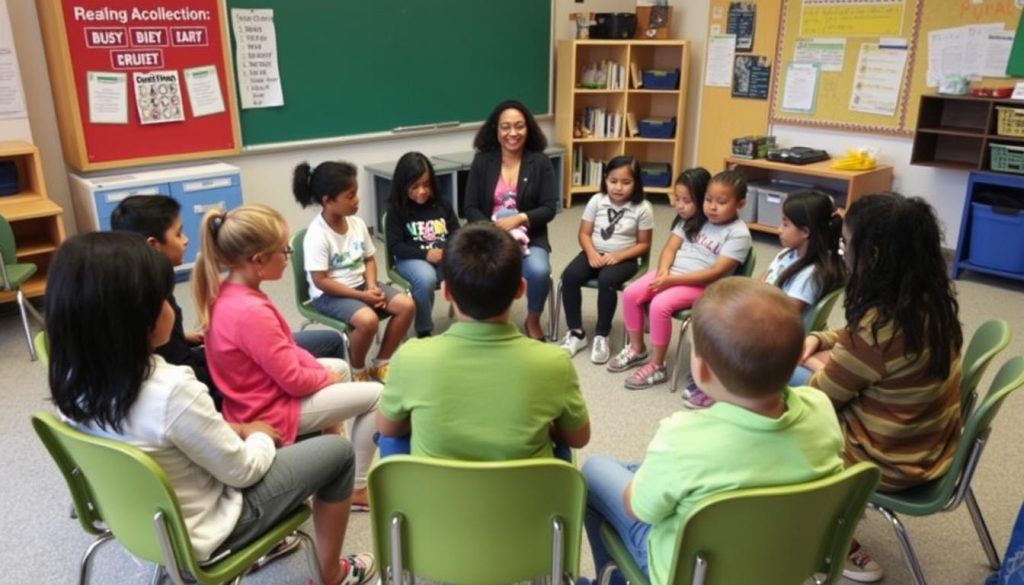
Regular relationship check-ins help you gauge the health of your classroom community. These might take the form of anonymous surveys, class meetings, or individual conferences. The key is creating safe opportunities for students to share how they’re feeling about classroom dynamics, their learning experiences, and their sense of belonging. This feedback allows you to address concerns before they become significant problems.
Conflict is inevitable in any community, including classrooms. When disagreements or misunderstandings arise, view them as opportunities to model healthy relationship repair. Developing teacher skills in conflict resolution not only preserves your connections with students but also teaches them valuable social-emotional skills they’ll use throughout life.
Consider this framework for relationship repair:
- Acknowledge the issue without blame or judgment
- Listen to understand all perspectives
- Take responsibility for your contribution to the problem
- Collaborate on solutions that address everyone’s needs
- Follow through on agreed-upon changes
- Check back later to ensure the relationship is healing
Restorative practices offer powerful tools for maintaining classroom relationships. Rather than focusing solely on rules and consequences, restorative approaches emphasize repairing harm and rebuilding community when problems occur. Circle discussions, restorative questions, and collaborative problem-solving all support this relationship-centered approach to classroom management.
As the year progresses, continue finding ways to deepen your knowledge of students. Their interests, challenges, and goals may evolve, creating new opportunities for connection. The teacher skills you develop in ongoing observation and responsive interaction allow your relationships to grow rather than stagnate.
Take Your Relationship-Building Skills to the Next Level
Our comprehensive course provides research-based strategies for creating, maintaining, and repairing relationships with even your most challenging students.
Conclusion: The Lasting Impact of Building Relationships
The relationships you build with students extend far beyond the academic year. When students feel genuinely seen, valued, and supported by their teachers, they develop not only academic skills but also the social-emotional foundations for lifelong success. Your investment in building relationships creates ripple effects that continue long after students leave your classroom.
Research consistently shows that positive teacher-student relationships are associated with higher academic achievement, improved attendance, reduced behavioral problems, and greater student satisfaction with school. These benefits are particularly pronounced for students who have historically been marginalized in educational settings or who face significant challenges outside of school.
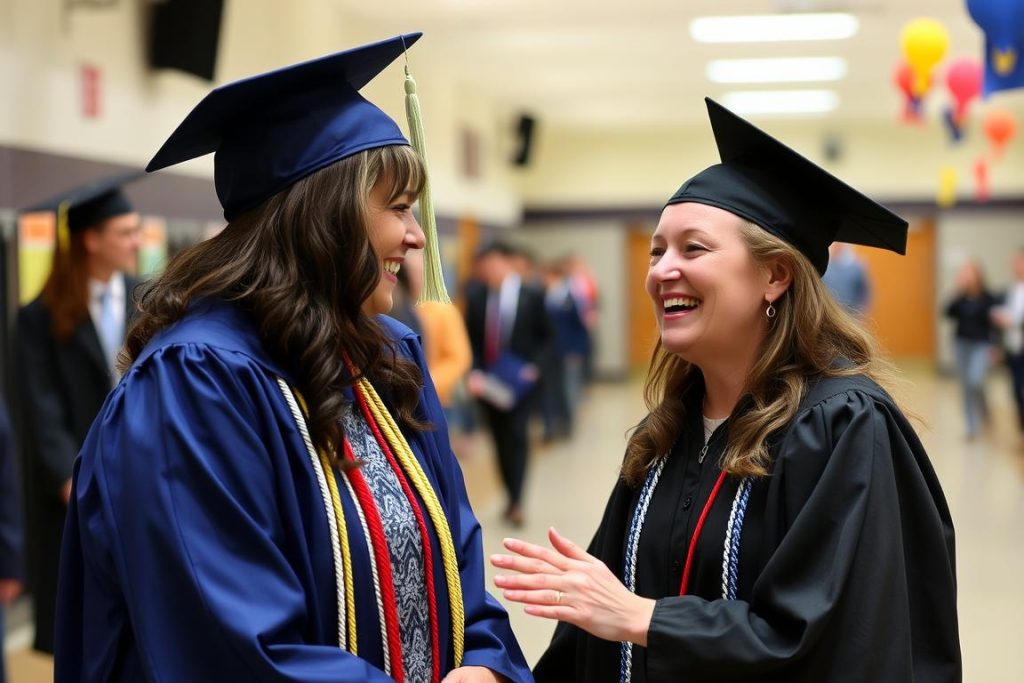
Perhaps most importantly, the teacher skills you develop in relationship-building serve as powerful models for your students. Through your interactions, students learn how to communicate effectively, resolve conflicts, show empathy, and build their own healthy relationships. These social-emotional competencies are increasingly recognized as essential for success in college, careers, and community life.
Remember that relationship-building is both an art and a science. While research provides valuable frameworks and strategies, the most effective approaches will always be those that reflect your authentic teaching style and respond to your specific students’ needs. Trust your instincts, remain flexible, and continue refining your relationship-building practices throughout your teaching career.
As you implement the strategies discussed in this article, be patient with yourself and your students. Building meaningful relationships takes time, especially with students who have experienced relational trauma or educational disappointment in the past. Your consistent care and genuine interest will gradually create the foundation of trust necessary for powerful learning experiences.
The effort you invest in building relationships with students represents some of the most important work you’ll do as an educator. In a profession increasingly focused on standardized measures and academic outcomes, your commitment to knowing and valuing each student as an individual makes a profound difference—not only in their academic success but in their development as confident, connected human beings ready to contribute to their communities.
Continue Your Professional Growth
Explore our comprehensive resources for building effective teacher-student relationships and creating classroom communities where all students thrive.

